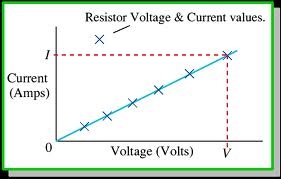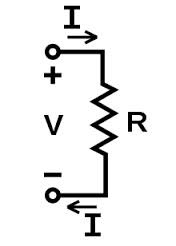The relation between current and voltage was given by Ohm and this relation is called Ohm's Law.
Statement:
The potential applied across the two ends of the conductor is directly proportional to the current passing through the conductor provided the physical state and temperature of the conductor remains constant .

Mathematical Form:
Let us consider a conductor which carries a current I and pitential difference V is applied across its two ends. If we increase the potential across the two ends of the conductor then the current will also increase This means that the potential is directly proportional to the current through the conductor i.e
V proportionl I
V = constt I
V = RI
OR
I proportional V
I = constt V
I = (1/R)V
IR = V
V = RI
which is the mathematical form of Ohm's Law.

The devices and circuits which obey Ohm's Law are called ohmic and those which do not are called non-ohmic. But in modern electronics most devices donot obey Ohm's Law because temperature and resistance of such devices do not remain constant with the passage of time.

Example:
P-N Junction Diode is a non-ohmic. For such devices we can not use Ohm's Law , we use a modified form of Ohm's Law which is called "Microscopic Form of Ohm's Law".

Microscopic Form of Ohm's Law will inshallah be discussed in some other blog.



